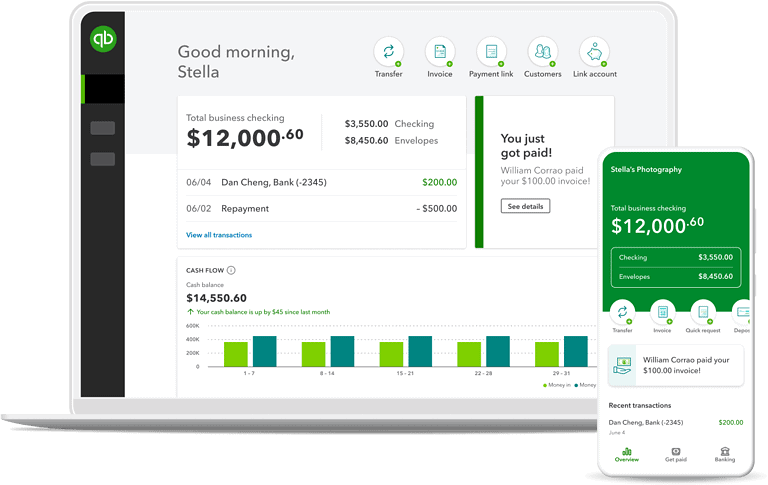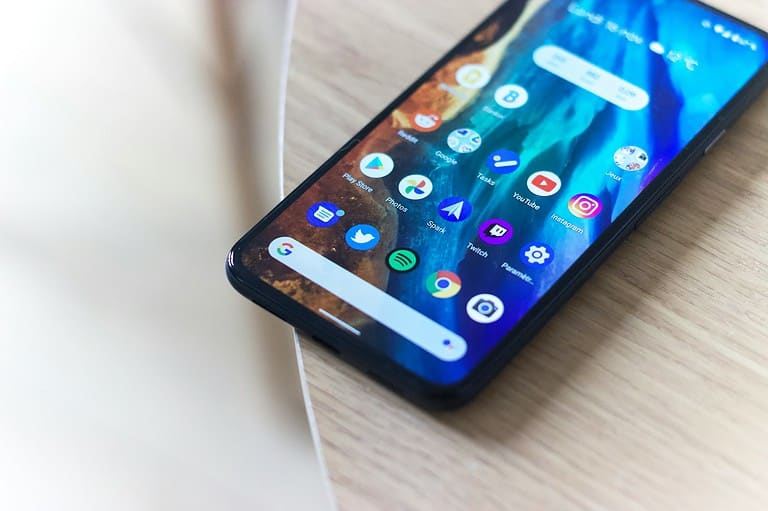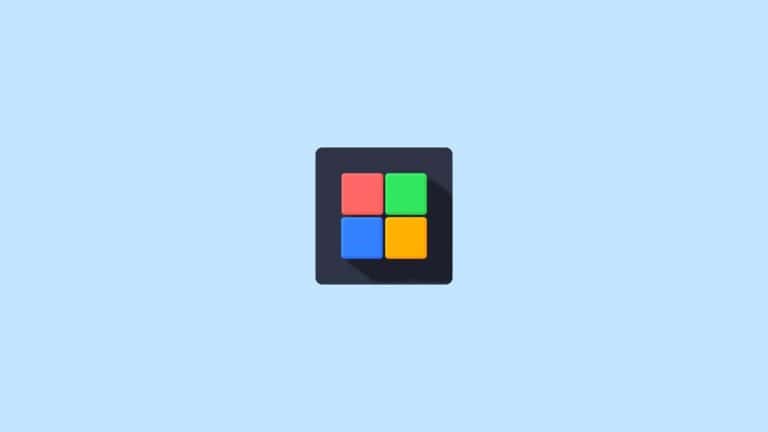
Looking to enhance your classroom with engaging writing tools? Quill offers a suite of free educational resources that can transform how students practice grammar and writing skills. Quill’s platform provides interactive lessons that make learning fun while giving teachers valuable insights into student progress. Getting started with Quill is straightforward and requires just a few simple steps to access powerful teaching tools that help students become better writers.
Whether you’re completely new to the platform or returning after a break, Quill makes it easy to jump in. You can begin by creating a teacher account, exploring the diagnostic tools, and setting up your first classroom. The Getting Started Guide for Teachers walks you through everything from signing up to assigning your first activity, while demonstration accounts let you explore features before implementing them with students.
For more hands-on guidance, Quill offers free live webinars designed to help you maximize their tools. These sessions cover everything from basic setup to advanced features like Quill Lessons, their teacher-led instructional tool that enables real-time interaction with students during writing instruction.
How to Get Started in Quill: A Beginner’s Guide
Quill is a powerful, user-friendly platform designed to help you create stunning 3D animations and sketches with ease. Whether you’re an artist, educator, or enthusiast, this guide will help you get started with Quill quickly.
Step 1: Install Quill
- Download Quill from the official website or your VR platform’s store (e.g., Oculus Store for Oculus devices).
- Ensure your VR headset and controllers are properly set up and connected.
Step 2: Learn the Basics of the Interface
- Familiarize yourself with the Quill workspace: the drawing canvas, tool palettes, timeline, and playback controls.
- Use your VR controllers to navigate menus, select tools, and manipulate your drawings in 3D space.
Step 3: Start Drawing
- Select a brush tool from the palette.
- Use your VR controller to draw strokes in 3D space — the lines will appear as volumetric shapes you can view from any angle.
- Experiment with different brush sizes, colors, and opacity settings.
Step 4: Create Animations (Optional)
- Use the timeline feature to add keyframes and animate your drawings over time.
- Play back your animation to see how the elements move and evolve.
- Adjust timing and transitions to refine your animation.
Step 5: Save and Export Your Work
- Save your project frequently to avoid losing progress.
- Export your artwork or animation as a video or 3D file to share on social media or use in other projects.
Tips for Beginners
- Start with simple shapes and strokes to get comfortable with drawing in 3D space.
- Watch tutorials and join Quill communities to learn tips and tricks.
- Practice regularly to improve your spatial drawing and animation skills.
Key Takeaways
- Quill provides free interactive writing tools that require minimal setup through a simple teacher registration process.
- You can quickly assess student needs using Quill’s diagnostic tools and customize activities for different learning levels.
- Live webinars and comprehensive guides help you implement Quill effectively in your classroom with step-by-step instructions.
Understanding Quill
Quill is a powerful tool that enables artists and educators to create content in different contexts. The platform’s approach varies based on whether you’re using it for education or virtual reality animation.
Historical Context
Quill was originally developed as a VR animation tool that revolutionized how artists create directly in virtual reality. The tool emerged as part of the growing VR creative movement, allowing artists to express their vision without traditional constraints.
Quill’s educational version has a different origin story, focused on literacy and writing skills development. This educational platform was built to help teachers guide students through improved writing practices with interactive lessons.
Both versions share a name but serve distinct purposes – one for artistic expression in VR, and the other for educational advancement in classrooms.
Core Concepts
In Quill VR, you’ll work with frame-by-frame animation techniques to create fluid movement. Each stroke you make exists as a 3D element that can be manipulated within the virtual space.
Layers form an essential part of Quill’s structure, allowing you to organize your work logically. You can separate elements into different layers to edit them independently without affecting other components.
Sequence layers help you create animated sections that play in a specific order. This is crucial for storytelling in VR animation.
In educational Quill, the core concepts revolve around interactive lessons and writing exercises. You’ll find tools for grammar instruction, vocabulary building, and structured writing practice.
The platform offers premium features that enhance the teaching experience through advanced tracking and personalized learning paths.
Setting Up Your Environment
Before diving into Quill’s creative possibilities, you’ll need to ensure your system is properly configured. Getting the technical aspects right from the start will save you time and frustration later.
System Requirements
Quill works best on computers with dedicated graphics processing units (GPUs). For optimal performance, your system should have at least 8GB of RAM and a GPU with 4GB of VRAM or more. Most modern VR-ready PCs will handle Quill without issues.
You’ll also need a compatible VR headset, such as an Oculus Quest 2 with Link cable or an Oculus Rift S. The Touch controllers are essential for the natural drawing experience that makes Quill special.
Operating system requirements include Windows 10 (64-bit) or newer. Make sure your graphics drivers are updated to the latest version to avoid compatibility issues.
Internet connectivity is necessary for the initial download and updates but not required for everyday use once installed.
Installation Process
To install Quill, you’ll need to download it through the Oculus app store. Open the Oculus app on your computer and search for “Quill” in the store section.
Once found, click the Purchase or Get button (Quill is now free) and follow the on-screen instructions. The download size is approximately 1GB, so ensure you have sufficient storage space.
After installation, you can launch Quill directly from your Oculus library. The first launch might take longer as it configures initial settings.
If you’re a developer looking to build with Quill’s capabilities, you can also integrate it using NPM packages for some components.
User Interface Overview
Quill’s interface is designed to be intuitive within the VR environment. Your left controller typically serves as your palette, while your right controller functions as your primary drawing tool.
The main UI elements include:
- Tool Panel: Contains brushes, colors, and layer controls
- Timeline: For animation work
- Settings Menu: Adjusts preferences and export options
Learning to adjust your camera angle is crucial for effective work in Quill. Use the grip buttons on both controllers to grab and move around your virtual space.
The editor provides both a 360° canvas and the ability to work on more focused areas. Practice navigating between different view modes to find what works best for your project.
Basic Operations
Mastering the basic operations in Quill helps you create impressive VR artwork quickly. These fundamental skills form the foundation for more complex projects and animations.
Creating Your First Quill Project
To begin your Quill journey, open the application and select “New Scene” from the main menu. You’ll see a blank 3D space where your creation will take shape. The primary tools in Quill appear on your virtual palette, including the brush, eraser, and selection tools.
Start by selecting the brush tool and adjusting its size, opacity, and color using the palette controls. Make your first strokes in the 3D space by pressing the trigger button and moving your hand. Don’t worry about mistakes—the undo function is readily available.
For structured work, you can create a spawn area that serves as your reference point. This helps maintain perspective and scale in your VR environment. Remember to save your project frequently by accessing the menu and selecting “Save.”
Understanding the Timeline
The timeline is essential for creating animated scenes in Quill. Access it through the main menu by selecting the timeline icon. You’ll see a horizontal bar representing the duration of your animation.
To add frames, place the playhead where you want a new keyframe and press the “Add Keyframe” button. You can create smooth transitions between frames by adjusting the interpolation settings.
The timeline includes play and stop controls to preview your animation. Use these frequently to check your work’s flow and timing. You can adjust the playback speed to fine-tune animations.
For more complex animations, use the markers feature to set important points in your timeline. This helps you navigate to specific sections quickly during editing. The timeline also displays the frame count and duration, helping you maintain consistent timing.
Working With Layers
Layers organize your Quill project into manageable components. Access the layers panel through the main menu to view and manage your project structure.
Create new layers by pressing the “+” button in the layers panel. Each layer can be independently edited, hidden, or locked. This is particularly useful when working on complex scenes with multiple elements.
You can cut elements from one layer and paste them to another using the selection tool and the cut command. This helps organize your scene as it grows more complex.
Apply transform keys to layers to change their position, rotation, or scale over time. This creates dynamic movements without affecting other elements in your scene. Layers can also have different opacity settings, allowing for interesting visual effects.
Properly naming your layers keeps your project organized and easier to edit later. Double-click a layer name to rename it based on its content or function.
Advanced Techniques
After getting comfortable with Quill basics, you can explore powerful techniques that will take your VR artwork to the next level. These methods will help you create more dynamic and professional-looking projects.
Using Animbrush for Enhanced Effects
Animbrush is one of Quill’s most powerful features for creating stunning visual effects. To use it effectively, select the Animbrush tool from your palette and adjust the settings to control how your strokes animate over time.
Try varying the speed and direction parameters to create organic-looking movements. For fire effects, use short, upward strokes with decreasing opacity as demonstrated in advanced fire animation tutorials.
The key to mastering Animbrush is experimentation. Create different brush presets for common effects you use:
- Wind effects: Long, horizontal strokes with gentle wavering
- Water ripples: Concentric circles with fading opacity
- Smoke: Upward swirling patterns with fuzzy edges
Remember to use layers to separate your animated elements, making them easier to edit later without affecting your entire composition.
Creating 3D Animations
Quill’s 3D animation capabilities allow you to bring your artwork to life through movement. Start by creating keyframes for your objects using the timeline at the bottom of your workspace.
Multi-frame editing is an essential technique for efficient animation. This approach lets you adjust elements across multiple frames simultaneously, saving significant time.
For smooth animations, use these techniques:
- Interpolation between keyframes to create natural transitions
- Looping animations for background elements that need to repeat
- Onion skinning to see adjacent frames while working
When animating characters, focus on establishing a solid pose for key moments before adding in-between frames. This technique, known as pose-to-pose animation, helps maintain consistency throughout your sequences.
Mastering Spawn Areas and Sequencing
Spawn areas let you control when and where elements appear in your animation. Create a spawn area by selecting the object you want to animate, then use the spawn tool to define when it appears.
Organizing your work with sequence layers is crucial for complex projects. Think of these as folders that contain related animation elements:
| Layer Type | Best Used For |
|---|---|
| Background | Static or slowly moving elements |
| Midground | Main action and characters |
| Foreground | Emphasis elements and effects |
For advanced sequencing, try the layer linking technique where movements in one layer trigger actions in another. This creates cause-and-effect relationships that make your animations feel more dynamic.
When working with multiple sequence layers, establish a clear naming convention. This simple habit will save you hours of confusion when your project grows in complexity.
Animation and Storytelling
Quill’s powerful animation tools let you bring your VR creations to life through deliberate storytelling and careful character movement. The software’s intuitive design makes frame-by-frame animation accessible while offering enough depth for complex narrative development.
Storyboarding Techniques
Begin your Quill animation journey by creating a storyboard that outlines your key scenes. Think of your storyboard as a visual roadmap that guides your entire project.
When storyboarding in Quill, design within a 180-degree space to optimize the VR viewing experience. This approach ensures your audience can comfortably follow your narrative without excessive head movement.
Create dedicated spawn areas for each scene transition. These spawn areas determine where viewers appear when entering a new scene, helping guide their attention to important story elements.
Use Quill’s layer system to organize story elements. This makes it easier to edit and animate specific components without affecting your entire composition.
Character and Scene Development
Build your characters using Quill’s intuitive brush tools. Start with simple shapes and gradually add details, keeping your character designs consistent throughout your animation.
Consider using PNG images to import reference materials or backgrounds into your Quill workspace. This can help maintain design consistency and save time on complex elements.
Think about your character’s movement style early in development. Quill allows for puppet-like animation where you can move strokes every other frame, similar to stop-motion animation techniques.
Test your character movements in small sequences before committing to full scenes. This helps identify potential issues with flow or timing.
Frame-by-Frame Animation Principles
In Quill, animation works similarly to traditional frame-by-frame techniques. Select individual strokes or elements and move them slightly between frames to create smooth motion.
Focus on timing and spacing to create convincing movement. Subtle adjustments between frames often create more natural animations than large position changes.
Use Quill’s playback features to regularly review your animation progress. This helps you identify awkward movements or timing issues early in the process.
For complex movements, consider using fewer frames initially to establish the basic motion (known as “blocking”), then add in-between frames to smooth the animation.
Remember that less is often more with VR animation. Too much movement can overwhelm viewers, so focus on meaningful motion that advances your story.
Optimizing Your Workflow
Making the most of Quill requires understanding its optimization features and streamlining your process. The right techniques can significantly improve both your creativity and efficiency.
Best Practices for Efficiency
When working in Quill, organize your layers carefully from the beginning. Create a folder structure that separates different elements of your VR artwork. This prevents confusion later when your project grows more complex.
The Performance menu highlights areas that need optimization, which you can address using the Optimize Brush. This tool helps reduce polycount in your meshes before exporting.
For large projects, work in sections rather than creating everything in one file. This approach makes your workflow more manageable and reduces potential performance issues.
Save your work frequently using keyboard shortcuts. Quill autosaves, but manual saves at critical points ensure you don’t lose progress if something unexpected happens.
Consider using reference images as guides. You can import these directly into your Quill workspace to maintain proportions and accuracy in your creations.
Customizing the Quill Editor
Personalizing your Quill interface can dramatically improve your productivity. Adjust the Editor layout to match your working style by rearranging panels and tools.
Take time to customize your brush presets. Having ready-made brushes for different purposes saves time during the creative process. Create separate presets for sketching, detailing, and coloring.
You can modify the Theme of the Editor to reduce eye strain during long sessions. Darker themes often work better in VR environments.
Set up custom Placeholders for elements you use frequently. These serve as templates you can quickly duplicate rather than recreating common items.
The folder structure in Quill can be used to “rig” characters, allowing for more efficient animation workflows. This organizational approach helps when creating complex animated scenes.
Utilizing Shortcuts and Commands
Learning keyboard shortcuts will significantly speed up your workflow. Common actions like Undo (Ctrl+Z), Redo (Ctrl+Y), and Save (Ctrl+S) work in Quill just as they do in other applications.
Master the Copy and Paste commands to duplicate elements quickly. This is especially useful when creating repetitive structures or patterns in your VR artwork.
The Optimize Tool simplifies meshes before exporting. Learn to use this command effectively to create lighter files that maintain visual quality while improving performance.
Use the quick-switch tool shortcut to toggle between brushes without opening menus. This maintains your creative flow without interruption.
Practice using the scaling and rotation gestures until they become second nature. Smooth manipulation of objects relies on mastering these basic commands.
Collaboration and Sharing
Quill offers powerful tools for working with others and distributing your writing projects. These features make teamwork seamless and help your content reach the right audience.
Project Management and Version Control
When collaborating in Quill, you can easily track changes and maintain document history. Liveblocks technology enables real-time syncing and multiplayer features in your Quill editor using Yjs, a specialized data store designed for collaborative text editing. This means multiple team members can work on the same document simultaneously without conflicts.
You can see who made specific changes and when they occurred. This tracking helps prevent accidental deletions or unwanted edits.
For remote teams, Quill allows you to automate messaging about deadlines and project milestones. This automation keeps everyone informed without constant manual reminders.
Version control in Quill lets you revert to previous document versions if needed, providing a safety net for collaborative work.
Sharing Your Work with Others
Quill makes distributing your content straightforward with multiple sharing options. For teachers, Quill Lessons enables modeling responses, sharing selected student work with the class, and facilitating group discussions.
You can share activities with students via direct links or through Google Classroom integration. This makes it easy for students to find and complete specific assignments you’ve created.
For general sharing, Quill offers customizable permission settings:
- View only: Recipients can read but not edit
- Comment only: Allows feedback without editing rights
- Full editing: Grants complete collaboration access
Export options include PDF, HTML, and other formats to ensure your work displays correctly across different platforms and devices.
Troubleshooting and Support
When using Quill, you might face technical challenges that can disrupt your teaching experience. Quick solutions to common problems and knowing where to find help can save you valuable classroom time.
Common Quill Issues and Solutions
If Quill is loading slowly or not loading at all, first check that your internet connection is active and strong. A weak connection often causes loading issues with educational platforms like Quill.
Having trouble with blocked content? Your school’s firewall might be the culprit. You can troubleshoot firewall issues by speaking with your IT department about allowing Quill domains.
For mobile users, check if Quill works properly on your device. Some Quill features may have limitations on tablets and phones, so it’s worth confirming compatibility before planning lessons.
Cookie settings can also affect Quill’s performance. Make sure cookies are enabled in your browser settings for the full functionality of the platform.
Seeking Assistance from the Community
When self-troubleshooting doesn’t solve your problem, Quill offers multiple support channels. The Quill Teacher Resources page contains comprehensive documentation with over 64 articles to help you navigate common issues.
For personalized help, you can message the Quill team directly using the green message bubble that appears at the bottom right corner of the screen. Alternatively, email your concerns to [email protected].
The Quill Forum is an excellent resource for connecting with other educators. Here you can ask questions, share experiences, and get advice from teachers who may have encountered similar challenges.
Remember that the Quill documentation is regularly updated, so checking the latest guides can often provide solutions to your most recent technical issues.
Frequently Asked Questions
Here are answers to common questions about getting started with Quill across different platforms and educational contexts. These will help you navigate initial setup processes and understand requirements for various implementation scenarios.
What is the initial setup process for using Quill with Vue.js?
To set up Quill with Vue.js, first install the necessary packages using npm or yarn.
npm install vue-quill-editor --save
Import the Quill editor component in your Vue file. You’ll need to include both the component and the required CSS styles.
import { quillEditor } from 'vue-quill-editor'
import 'quill/dist/quill.core.css'
import 'quill/dist/quill.snow.css'
Register the component in your Vue instance and create a data property to bind with the editor content. This allows you to easily access and manipulate the text content.
Can you provide a step-by-step guide for integrating Quill with a React application?
Start by installing the React Quill package using npm or yarn.
npm install react-quill --save
Import ReactQuill in your component file. You’ll also need to include the Quill stylesheet.
import ReactQuill from 'react-quill'
import 'react-quill/dist/quill.snow.css'
Create a state variable to store the editor content and set up the basic component. Handle changes with an onChange function to keep your state updated with editor content.
function Editor() {
const [value, setValue] = useState('');
return <ReactQuill value={value} onChange={setValue} />;
}
How can one get started with Quill in an Angular project using quill-editor?
Begin by installing the ngx-quill package through npm.
npm install ngx-quill quill --save
Import the QuillModule in your Angular module file. Add it to your imports array to make it available throughout your application.
import { QuillModule } from 'ngx-quill'
@NgModule({
imports: [
QuillModule.forRoot()
]
})
Add the quill-editor component to your template file. Bind it to a model for accessing the content value in your component class.
<quill-editor [(ngModel)]="editorContent"></quill-editor>
What are the requirements for getting approved to use Quill in an educational setting?
Quill is available for educational use without formal approval processes. You can create classes manually or import them from Google Classroom or Clever.
To get started, create a teacher account on the Quill platform. This gives you immediate access to all the teaching tools and resources.
The platform is designed for classroom environments and complies with educational data privacy standards. This makes it suitable for implementation in schools without specialized approval in most cases.
At what educational levels can Quill’s features be effectively utilized?
Quill’s tools work best for elementary through high school students. The platform offers differentiated content suitable for various grade levels.
Middle school students benefit particularly from Quill’s grammar and writing exercises. The activities are designed to match curriculum requirements for these grades.
High school teachers can use advanced features including custom content for AP classes. The platform scales appropriately to match increasing complexity in writing skills.
What are the prerequisites for students to gain access to Quill’s learning tools?
Students need basic computer literacy skills to effectively use Quill. They should be comfortable typing and navigating simple web interfaces.
Teachers must first set up their classroom on Quill. Students gain access when you create classes and add them to your virtual classroom.
Each student will need a device with internet access. Quill works on computers, tablets, and other devices with web browsers, making it flexible for various classroom setups.






